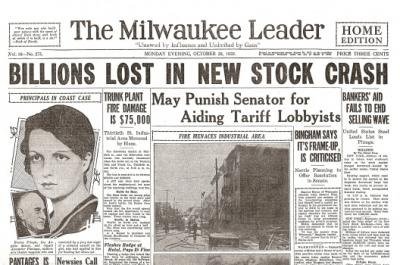A Brief History of US Securities Law and its Relevance to Cryptocurrencies
Increasingly, regulators and policy makers have called for the regulation of cryptocurrencies in the United States. One solution that many pundits have advocated for is to classify cryptocurrencies as "securities" and place them within the existing regulatory framework controlled by the United States Securities and Exchange Commission. In analyzing this approach, it is important to look at U.S. securities law through a historical lens to see what these laws were meant to accomplish.

A Brief History of United States Securities Laws
The Securities Act of 1933 and the Securities and Exchange Act of 1934 were enacted to bring stability to and instill confidence in the securities market after the Stock Market Crash of 1929.[1]
Throughout the 1920’s, investors across the country were pouring money into the securities market.[2] From 1921 to 1929, the Dow Jones Industrial Average increased from 63 dollars to a high of 381 dollars.[3] Many investors were engaged in speculation, optimistically investing in new technology or industrial corporations with hopes of getting rich quickly. [4] Additionally, new brokerage houses allowed ordinary people to purchase corporate equities and even obtain loans to do so.[5]
Many of these investors purchased securities based on nothing more than a promotional circular distributed by new corporations soliciting capital.[6] These circulars gave potential investors very little information regarding the securities, the future use of the capital being raised, or even a clear description of the underlying business.[7] Instead, these promotional materials contained puffery about the underlying security.[8] Unbeknownst to many investors, some of the promoters were receiving the securities at a cheaper price than the average investor.[9]
Additionally, many of the more speculative businesses were the first to take advantage of targeted advertising, by obtaining lists of addresses for homes where a resident had previously purchased securities.[10] Because of these misrepresentations and heavy-handed sales practices, investors continued to pour money into these new companies. [11] Congressional investigators later found that in the decade after World War I, nearly fifty billion dollars of new securities were issued - almost half of them worth nothing.[12]
Prior to the Securities and Exchange Acts, states attempted to regulate the securities market using what came to be known as “blue sky laws.”[13] These laws, which are still enforced today, were said to prevent the occurrence of fraud in the sale of securities.[14] Generally, these laws required issuers of securities to register new offerings with a state commission for approval.[15] While many of these offerings were not approved because they were fraudulent or so speculative as to be close to fraudulent, these commissions still allowed many suspect offerings to slip through the cracks.[16] Additionally, without a uniform set of specialized securities laws, these laws presented a hodgepodge of crude enactments whose public interest motives were often coopted by special interests within the state.[17]
After the stock market crash of 1929, policy makers sought to remedy the problems of the 1920’s by creating a system where investors could make informed decisions.[18] The Securities Act, also called “truth in securities act” with amendments in the Securities Exchange Act, mandates disclosure of material information through registration with the Securities and Exchange Commission.[19] While the SEC does not determine if the security would be a wise investment, this act at least provides potential investors with the opportunity to find the relevant information needed to make sound decisions.[20] Additionally, this act provides civil liability for filing false or misleading information and criminal liability for selling or advertising securities not compliant with the Securities Act.[21]
Remaining Questions
After reading about the history of U.S. securities laws, one can quickly draw parallels between the unregulated market of the 1920's and the cryptocurrency market today. For example, some circulars from the 1920's may have been as misleading or incomplete as white papers and ICO plans we see today. The speculative frenzy that surrounded the bull run of the 1920's may have been as irrational as the crypto gold rush we see today. Finally, the lack of regulation may leave some harmed investors with little legal recourse.
While there are many similarities, there are certainly many differences that investors and pundits are quick to point out. Intelligent minds can and will disagree over whether the similarities are enough to justify regulatory action under the purview of the SEC. In the mean time, all we can do is assess our own level of risk tolerance, invest accordingly, and hope for the best.
Congratulations @handy-man, you have decided to take the next big step with your first post! The Steem Network Team wishes you a great time among this awesome community.
The proven road to boost your personal success in this amazing Steem Network
Do you already know that awesome content will get great profits by following these simple steps, that have been worked out by experts?
Congratulations @handy-man! You have received a personal award!
Click on the badge to view your Board of Honor.
Do not miss the last post from @steemitboard:
Congratulations @handy-man! You received a personal award!
You can view your badges on your Steem Board and compare to others on the Steem Ranking
Vote for @Steemitboard as a witness to get one more award and increased upvotes!